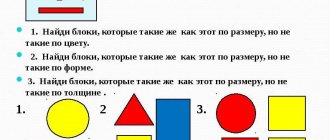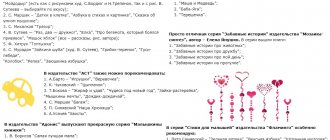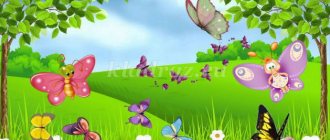Excerpts from one of the parent forums:
“Does anyone have these blocks? Do children like it or do they use it for the most - building houses? I'm wondering whether to order such a box or not? Will they just scatter it all over the apartment again?”...
*
“In my opinion, it’s not necessary. These blocks are good to use in classes in kindergartens, otherwise there is little interesting in them, geometric figures and that’s all.”
Well what can I say? You can scatter anything...
What are Dienes blocks
This is the name of a special didactic manual for mastering mathematics, developed by a famous Hungarian scientist.
Zoltan Gyenes devoted his entire life to this discipline. He tried to make it as understandable and interesting as possible for children. For this purpose, he specially developed the author's Dienesh system for the early development of mathematics by children. The game manual is a set of 48 geometric shapes. They are represented by elements, among which there are no repetitions. The figures are divided according to the following criteria:
- Color. Blue, red, yellow.
- Size. Small, big.
- Thickness. Thick, thin.
- Form. Circle, triangle, square, rectangle.
A little about the author
The author of the method, Zoltan Dienes (1916-2014), is a Hungarian mathematician, psychologist, and teacher.
From an early age, Zoltan was very fond of mathematics; it seemed quite interesting to him and was easy for him. At the age of 23, he already received a doctorate.
Over the years, he decided to create something of his own that would make it easier to convey mathematical teachings to his little children who attended his classes.
This is where various logic games and exercises appear, which should not only teach the child, but also interest him even more in further activities. This is what he strived for more. He wanted children to want to do math themselves and play again and again.
Methodology
Dienesh's logic blocks are designed for teaching mathematics in a playful way. Classes with them contribute to the development of memory, attention, imagination, and speech. The child develops the ability to classify material, compare, and analyze analytical information. The optimal age to start classes is 3-3 years. Working with Dienesh's logical blocks will teach your little one:
- Identify the properties of objects, name them, explain what the differences and similarities are, and support your reasoning with arguments.
- Think logically.
- It's better to talk.
- Understand color, thickness, shape and different sizes.
- Be aware of space.
- Solve educational and practical problems independently.
- Persistently pursue goals, cope with difficulties, and take initiative.
- Perform mental operations.
- Develop imagination, creative and intellectual abilities, fantasy, modeling and design skills.
History of creation
It is interesting to look at some facts from the biography of the Hungarian teacher, mathematician and child psychology researcher Zoltán Dienes. It was he who gave children of all countries a wonderful way to develop and comprehend the mathematical side of reality. He really wanted to create something that would make mastering exact mathematical science comfortable, interesting and entertaining. As a result, he achieved his goal and developed an excellent technique, which is very popular among teachers and parents.
The learning process should not be boring, Zoltan Dienes believed
When something is explained to a child for a long time, he needs to listen carefully, then try to repeat what he heard, then he, as a rule, loses interest and cannot maintain stable attention for a long time
While examining the peculiarities of the development of mental abilities in preschool children, Dienesh made an important conclusion: children cope well with mastering numbers and simple arithmetic, but they are extremely weak in understanding abstractions. The child searches for an answer, often using a pattern (scheme) already known to him.
But the search is not always successful. Based on this fact, Dienes came up with a way to familiarize yourself with complex abstract categories in an accessible visual form. This approach is an important component of preparing a child for further education at school. But on top of everything else, it brings kids a lot of fun in the process of mastering logic.
How to work with Dienes blocks
Classes take place in several stages. Dienesh developed his method taking into account the psychological aspects of young children, so there is no need to be afraid that it will be too complex for the thinking of a preschooler. The following stages of development of mathematical abilities are distinguished:
- Free play. The goal is to teach the baby to solve unfamiliar problems using the “trial and error” method, trying out different options.
- The baby smoothly switches to playing according to certain rules. As classes progress, basic information becomes familiar, for example, “which shapes are the same.”
- Discussion, comparison of the content of mathematical games. It is necessary to select different options with related rules, but different game materials.
- Familiarization with the content of numbers. It is recommended to use maps, diagrams, tables.
- The last stage is the longest and is suitable for older preschoolers. It should offer different cards with definitions of rules that help to come to specific logical conclusions. Gradually, the baby will become familiar with such concepts as theorem and axiom.
Logic blocks
The figures themselves are the basis of Dienesh’s technique. They provide many exciting educational games for children of different ages. The main purpose of Dienesh blocks is to teach a child to understand the properties of objects. With their help, he will learn to distinguish and combine objects, and classify them. The presence of pictures and special albums will significantly diversify the number of games that you can offer your preschooler.
Cards
For classes, images are used that contain symbolic information about the properties of the figure. It looks like this:
- The color is indicated by a spot.
- The size is the silhouette of the house. A small one is designated as a one-story building, a large one as a multi-story building.
- The contours of geometric shapes correspond to the shape.
- The thickness is two images of men. The first one is fat, the second one is thin.
- In Dienesh's set there are cards with denial. For example, a multi-story building with a cross through it means that the desired figure is “not big,” that is, small.
Sets of cards can be used not only together with Dienesh blocks, but also for independent games. Working with them develops logic, the skill of decoding information using symbols. First, the child should be given the simplest game tasks to get acquainted with Dienesh cards, and then gradually complicate them. A set of images can significantly diversify classes and make them much more interesting.
Albums
You will need to purchase several such benefits for each age range. They should be selected according to the child’s level of development, and not according to how old he is at the moment. Sometimes at 3 years old a child has the development of a 5 year old, and sometimes vice versa. The albums contain various games with Dienesh figures, diagrams and drawings according to which you can put them together. You can complicate the tasks yourself, add variety to them, focusing on the child’s reaction.
Dienesh's Original Theory: Six Steps to Learning Math Concepts for Kids
Zoltan Dienes is a famous Hungarian mathematician, practicing teacher and psychologist, who radically changed the stereotypical perception of mathematics as a routine and uncreative scientific discipline. Z. Dienesh's gaming methodology is aimed at helping children of preschool and primary school age to master a variety of mathematical concepts in an entertaining way, to form and develop the most important intellectual skills and psychological processes necessary for independent logical thinking.
Personal teaching experience and knowledge in the field of developmental child psychology helped Z. Dienesh to invent and implement the concept of six steps of learning mathematics for the little ones. In addition, the theory received original methodological equipment with a complex of didactic materials in the form of additional game aids and visual logical blocks, which became an effective tool for the development of the creative and mental potential of children. The methodology is used both in official pedagogy and in the self-education system.
The use of Dienesh's logical blocks in the development of logical and mathematical thinking in preschool children
The idea of six steps for mastering mathematical knowledge and skills has undergone successful practical testing and proven its effectiveness. The substantive features of each stage received their own name:
Free creative play. The content of this phase consists of the teacher setting a specific task for the child. In search of a solution, the child goes through spontaneous options and experimentally finds the correct answer. This is the stage of introducing the child to the task that needs to be resolved. This is how a child begins to learn mathematical wisdom. Rules of the game. Having overcome the stage of trial and error, the baby begins the second phase - learning the rules of the game
It is important for a teacher or parent to correctly and clearly convey to the child’s mind the most important information about the rules for achieving the desired result. Matching phase. Taking the third step, the child faces the need to perform the mental operation of comparison
The author of the method invites adults to test the idea of several games with similar meanings, but with different didactic material, in games with children. For example, first we play with blocks, then we cut out animal figures or lay out geometric shapes. We must see that the child independently solves the algorithm for correctly achieving the goal, regardless of the game material. In this way, you can make sure that the baby’s intellectual actions are meaningful and are not the result of mechanical memorization and automatic reproduction. This stage is necessary for the development of abstract thinking abilities. Introducing the abstract number symbol. At the fourth stage, various diagrams, maps and game tables will be in demand for the development of visual perception, the formation of visualization skills, and familiarization with the abstract meaning of numbers. Symbolic stage. The fifth step leads the child to the conclusion that the logical chains of various game series lead to a common result. To understand game cards, a special language of symbols is needed, which the child himself creates during the lessons. Stage of independent conclusions. The final stage will be the longest. The child, with the help of an adult, studies the meaning of the terms axiom and theorem, and independently draws the necessary logical conclusions based on the description of the rules of playing cards.
The possibilities of the manual are not limited to classes on the formation of basic mathematical knowledge; you can play Dienish games while learning English. Preschoolers post images, selecting the desired shapes and commenting on their actions (“big blue triangle”, “little yellow square”)
Dienisch developed his methodology for children in the age range from two to eight years, taking into account intellectual and psychological characteristics, so mathematical lessons are perceived with enthusiasm and passion. Adults need to be patient in studying the theoretical part of the method, as well as understand the set of teaching aids
The child’s developed ability to quickly and freely cope with complex mental exercises will be a worthy reward for parents and educators for their diligence and perseverance.
Dienesha blocks for the little ones
Children from the age of two can practice logical figures. Many simple games have been developed for them. Their main goal is to teach the child to distinguish between the properties of an object and to group objects according to certain characteristics. Such activities will not only be useful, but also interesting for every child. Check out some of the most popular game options.
Samples
These are the simplest games for kids who are just getting acquainted with the Dienesh set. Example:
- Place the elements of Dienesh in front of the child.
- Let him group them according to different criteria. First he selects everything of the same color, then size, etc.
Gradually the game becomes more difficult. Invite your child to sort blocks according to two or more criteria. For example:
- Choose yellow rectangular blocks and blue square ones.
- Get all the flat figures of the same size.
- Choose thin round blocks.
- Sort out all the blue triangle shapes.
Construction
All children, without exception, adore this creative game. It is very simple, but fascinating. The child is asked to put together different figures from the elements of Dienesh, first according to the diagrams, and then without them, gradually complicating the task. Examples of objects you might be asked to construct:
- house;
- table;
- house with windows;
- herringbone;
- shop;
- stool;
- sofa;
- chair;
- steps;
- armchair;
- machine.
Continue the series
The game is aimed at strengthening the child’s knowledge of geometric shapes, size, thickness, and color. Thanks to her, he will learn to find patterns. Task options:
- Place the elements of Dienesh on the table in front of the baby so that each next one differs from the previous one in one way. The child independently continues this series.
- Lay out a chain of Dienesh figures so that there are no objects nearby that are identical in two respects. Invite your child to continue this series.
- Place Dienesh figures in front of the baby by color: red, yellow, blue. He will continue the series, alternating shades in a given sequence.
Feed the animals
Place several of his favorite toys in front of your baby. Let him feed each one a pair of “cookies” (blocks). Offer some conditions, for example, the bear cub should be given only red food, and the kitten should be given square food. This game resembles sampling, but children perceive it much better. It’s rare that any child refuses to feed their pets.
Best age
Children of different age groups can practice with Dienesh blocks.
- The youngest children - from 2 years old - can use the elements of the set as substitute objects and play simple, exciting games (for example, “Feed the Animals”).
- Secondary preschool group. With the help of colored figures, children can build various pictures, using ready-made diagrams or using their own imagination.
- Senior preschool group. Blocks are a great way to improve math skills, learn to count, and gain the most important concepts of “more” and “less.”
- Elementary School. Numerous classes with Dienesh blocks will allow you to work through issues that you couldn’t figure out in class in a fun, non-boring way, as well as consolidate your knowledge and improve your ability to think logically.
Each age has its own exercises that will be interesting and accessible to children. Parents can use ready-made options from the file cabinet or come up with something of their own.
Games with Dienesha blocks for the older group
When the child grows up, he will be able to click the exercises for kids like seeds, and the tasks will have to be complicated. Dienesh's method for preschoolers is designed for children 5-6 years old. The exercises are more complex; not only the cubes themselves are actively used, but also cards and game albums. The tasks are aimed at developing logical thinking in an adult child and the ability to explain the decision made. Study a few games as examples, based on which you can come up with many more exercises.
Search
Give your child any figurine of Dienesh or offer to choose one yourself. Then, from the total mass of blocks, he will take out all those that coincide with the first one in one given property. Once he has mastered the game well, make it more difficult. Let the child select blocks that have two identical properties to the one originally taken. Then you can make the game even more difficult. The child must choose those blocks that do not have a single adjacent property with the first one.
Domino
This game is suitable even for several children. Rules:
- Each player receives an equal number of blocks. The order of participants is determined.
- The first one makes a move with any piece.
- The second one places a block that has one of the same properties.
- If there is no suitable piece, the participant misses a move.
- The first one to lay out all his blocks wins.
- The game can be complicated by changing the rules about the properties of the pieces being laid out. For example, you need to respond with a block that has two similar characteristics, etc.
Find the odd one out
The following game will help children learn to group three-dimensional geometric shapes according to various criteria. Rules:
- Place three figures in front of the child. One of them should not have a single property in common with the others.
- Let the child figure out which block is extra and explain why and how he came to this conclusion.
- Make the task more difficult. Lay out 6 blocks. The baby must remove the extra two.
Find a match
This game will appeal to children who have already mastered all the simple tasks well. Rules:
- Place several figures in a row in front of your child.
- Offer to select a steam room for each according to a specific property.
- Make the task more difficult. Let the child try to choose a pair based not on one, but on two or three properties.
- You can initially take, for example, 10 paired elements. Place them in a bag. Let the child make the pairs himself, laying out the Dienesh figures in two horizontal rows.
Artists
To play the game you will need several large sheets of colored cardboard. They serve as sketches of paintings. To compose the composition, additional cardboard parts are needed. The game teaches you to analyze the shape of objects, compare them, and develops creative and artistic abilities. Rules:
- Based on the sketches, the kids must “paint” a picture.
- They choose the preparation themselves. It shows schematically where which blocks should be located. Thin ones will only be outlined, and thick ones will be completely painted over.
- Let the children select the missing blocks and parts cut out of cardboard to the correct places in the “sketch”.
Shop
For this task you need cards with images of objects that will serve as goods, and logical elements. The game “Shop” develops memory, the ability to reason, justify your choice, identify and abstract properties. Rules:
- A preschooler comes to a store that has a variety of card products. He has three figures that perform the function of money. You can purchase one item for each.
- The child needs to buy an object that has at least one property that matches the money figure.
- You can gradually complicate the game by offering new rules.
Let's decorate the Christmas tree
The following game helps develop the skills of ordinal counting and diagram reading. For it you will need an image of a Christmas tree and 15 cards with symbols and blocks. Rules:
- The Christmas tree should be decorated with beads in five rows. Each will contain three beads.
- The number on the card is the serial number of the position of the thread from top to bottom. The circle painted on it shows which number the bead should go, and below it indicates which element will represent it.
- Let the child hang the first row of beads, and then all the lower ones, strictly following the diagram on the card.
Examples of activities
Here are some examples of games and exercises using the Dienesh method. They are used both at home and in junior, middle and senior groups of kindergartens.
"Second row". This game effectively trains the analytical type of comprehension. Multiple shapes must be used. We add them in a certain sequence, for example, triangles of two colors. Let the child try to guess which figure should follow next. If the solution is correct, he must build a triangle of the third color into the row. With another option, you can create a different sequence, for example a series of single-colored shapes. Let the little explorer guess that figures of the same color should be placed next to each other.
With kids
You can safely introduce children as young as two years old to mastering the Dienesh technique. By the age of three, their interest will increase even more.
A very useful activity for little children will be to simply distribute the figures into different groups, for example by color. It will be more difficult for them to group by size of elements and even more difficult by shape.
With preschoolers
Four- and five-year-old children enjoy working with Dienesh blocks. They are excellent assistants in preparing for further compulsory lessons at the age of six and seven and for teaching in the first grades. During this period, children can master many interesting tasks in this area.
"Let's decorate the Christmas tree"
One of these is called “Let’s decorate the Christmas tree.” You need to cut out a Christmas tree from cardboard or draw and decorate it. Next, you need to prepare cards with hints on which you need to depict figures painted in the three colors of Dienesh. Next to the image write a number that will indicate the number of figures placed on the Christmas tree. Let the subject try to understand the meaning of these patterns. And then, looking at them and using the elements of the Dienesh block, he will decorate the Christmas tree.
Classes with areas
It is important to introduce the concept of sets into children's thinking. Place red parts inside the drawn circles that do not intersect each other, and yellow parts inside the other circle.
Leave the blue parts outside the circles. In this way, the child becomes familiar with the fact that objects can be inside and outside. When the preschooler understands the essence of this activity, you can begin to complicate it.
Draw intersecting circles, put red figures in one of them, blue ones in the other, and let the student try to guess for himself which parts should be placed at the intersection. These are red and blue parts of the same size and shape, for example squares.
Complicated chain
This is an exercise option for older children. They are asked to create a chain so that neighboring figures have a similar feature. For example, the first figure is a blue square, the second is a circle, but of a different color, the third is a triangle of a color different from the square and circle. When the child can do this exercise without difficulty, you can invite him to come up with similar chains on his own.
Then you need to complicate the task much more: determine the number of objects that will be in the chain, for example eight, put the first and last figures, ask to distribute the elements so that a formed series of figures comes out that do not coincide with each other in any way. But first you need to check whether the problem you came up with has a solution; to do this, first assemble the sequence yourself.
See educational games for preschoolers with Dienesh blocks below.






